Over half of shoppers today say that choosing eco-friendly beauty products feels confusing and overwhelming. With so many claims about clean ingredients and responsible brands, it can be tough to know what truly matters for your skin and the planet. By learning how to assess your skin type, decode ingredient lists, spot meaningful certifications, and review sustainability efforts, you empower yourself to make smarter, healthier beauty choices that actually deliver real results.
Table of Contents
- Step 1: Assess Your Beauty Needs and Skin Type
- Step 2: Research Eco-Friendly Ingredients and Certifications
- Step 3: Compare Product Packaging and Sustainability Practices
- Step 4: Verify Brand Transparency and Ethical Standards
- Step 5: Test and Review Performance for Your Routine
Quick Summary
| Key Point | Explanation |
|---|---|
| 1. Assess Your Skin Type | Conduct a simple skin assessment to understand your skin’s characteristics, guiding product selection for effective care. |
| 2. Research Eco-Friendly Standards | Familiarize yourself with certifications and ingredients that ensure products are eco-friendly and safe for your health. |
| 3. Evaluate Packaging Sustainability | Compare product packaging for recycled and biodegradable materials to select brands prioritizing environmental responsibility. |
| 4. Check Brand Transparency | Investigate brands for ethical practices and transparent sourcing to ensure they align with your values and standards. |
| 5. Test Products Thoroughly | Maintain a testing journal to systematically evaluate products’ effectiveness over time for better skincare decisions. |
Step 1: Assess Your Beauty Needs and Skin Type
Understanding your unique skin profile is the foundation of selecting truly eco-friendly beauty products that nourish and protect your complexion. Recent advancements in personalized skincare technology, like the AI-assisted recommendation systems from arxiv, demonstrate how precise skin analysis can transform your beauty routine.
To effectively assess your skin type, start by observing key characteristics like oiliness, sensitivity, hydration levels, and any specific concerns such as acne, aging, or uneven texture. Conduct a simple at-home skin assessment by washing your face with a gentle cleanser, then waiting one hour without applying any products. Examine how your skin feels and looks: does it appear shiny and greasy, feel tight and dry, or maintain a balanced appearance? This quick evaluation helps determine whether you have oily, dry, combination, or normal skin.
Research from arxiv highlights the importance of ingredient analysis when selecting beauty products tailored to your skin type. Look for natural, plant-based ingredients that match your specific skin needs. For instance, individuals with dry skin might seek products containing hyaluronic acid and ceramides, while those with oily skin could benefit from ingredients like green tea extract or niacinamide. By understanding your skin’s unique requirements, you can make informed choices that support both your beauty goals and environmental sustainability.
Pro Tip: Consider consulting a professional dermatologist for a comprehensive skin analysis if you have persistent skin concerns or difficulty determining your exact skin type. This expert guidance can provide deeper insights into your skin’s specific needs and sensitivities.
Step 2: Research Eco-Friendly Ingredients and Certifications
Diving into the world of eco-friendly beauty requires understanding the key certifications and ingredients that define sustainable personal care products. Understanding what is eco-friendly beauty starts with knowing how to identify truly sustainable options that protect both your skin and the environment.
Start by familiarizing yourself with reputable third-party certifications that validate a product’s environmental and health standards. The EPA Safer Choice program offers an excellent benchmark for identifying products with safer chemical ingredients that meet stringent human health and environmental criteria. Similarly, the COSMOS certification sets comprehensive standards for organic and natural cosmetics in Europe, providing consumers with a reliable marker of authentic eco-friendly products.
When researching ingredients, look for natural botanical extracts, sustainably sourced components, and products that minimize synthetic chemicals. Focus on brands that transparently list their ingredients and provide clear information about their environmental impact. Pay attention to key indicators like biodegradability, organic certification, cruelty-free labels, and packaging sustainability. A truly eco-friendly beauty product should demonstrate commitment not just to personal wellness but to broader environmental preservation.
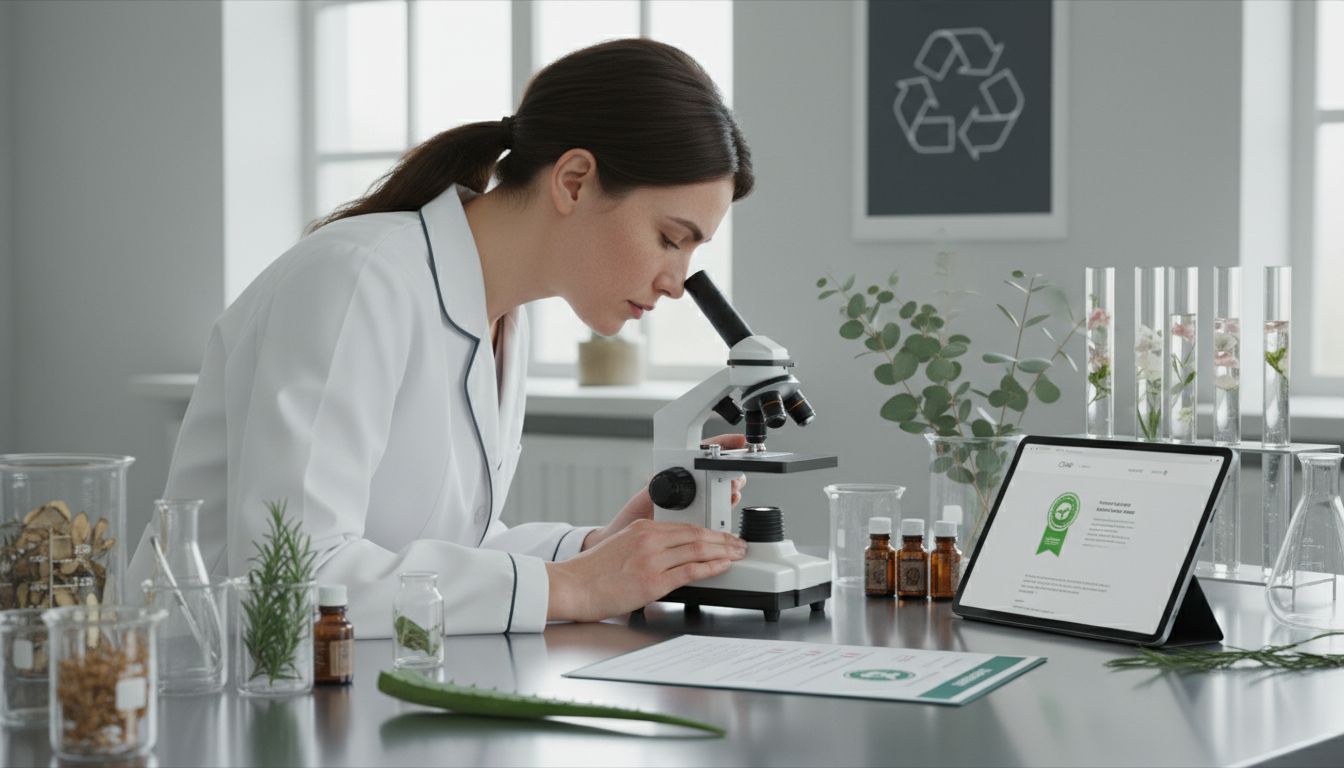
Pro Tip: Download certification guide apps or create a personal checklist of trusted eco-friendly beauty certifications to simplify your research process and make informed purchasing decisions quickly.
Step 3: Compare Product Packaging and Sustainability Practices
Exploring eco-friendly beauty requires a critical examination of product packaging and overall sustainability practices. What is sustainable packaging has become increasingly important as consumers demand greater environmental responsibility from beauty brands.
Research from IJNRD highlights that sustainability significantly influences consumer preferences in the cosmetics industry. When comparing packaging, look beyond aesthetic appeal and focus on key environmental indicators. Prioritize brands using recycled materials, minimal packaging, biodegradable containers, and those implementing refill or return programs. Pay attention to packaging weight, material composition, and the brand’s overall carbon footprint.
The IJARSCT study underscores the clean beauty trend’s emphasis on transparency and purity. Investigate brands that provide clear information about their manufacturing processes, ingredient sourcing, and environmental impact. Look for certifications like recyclable packaging symbols, carbon-neutral commitments, and transparent supply chain practices. Consider factors such as water usage, energy consumption during production, and the company’s commitment to reducing environmental waste.
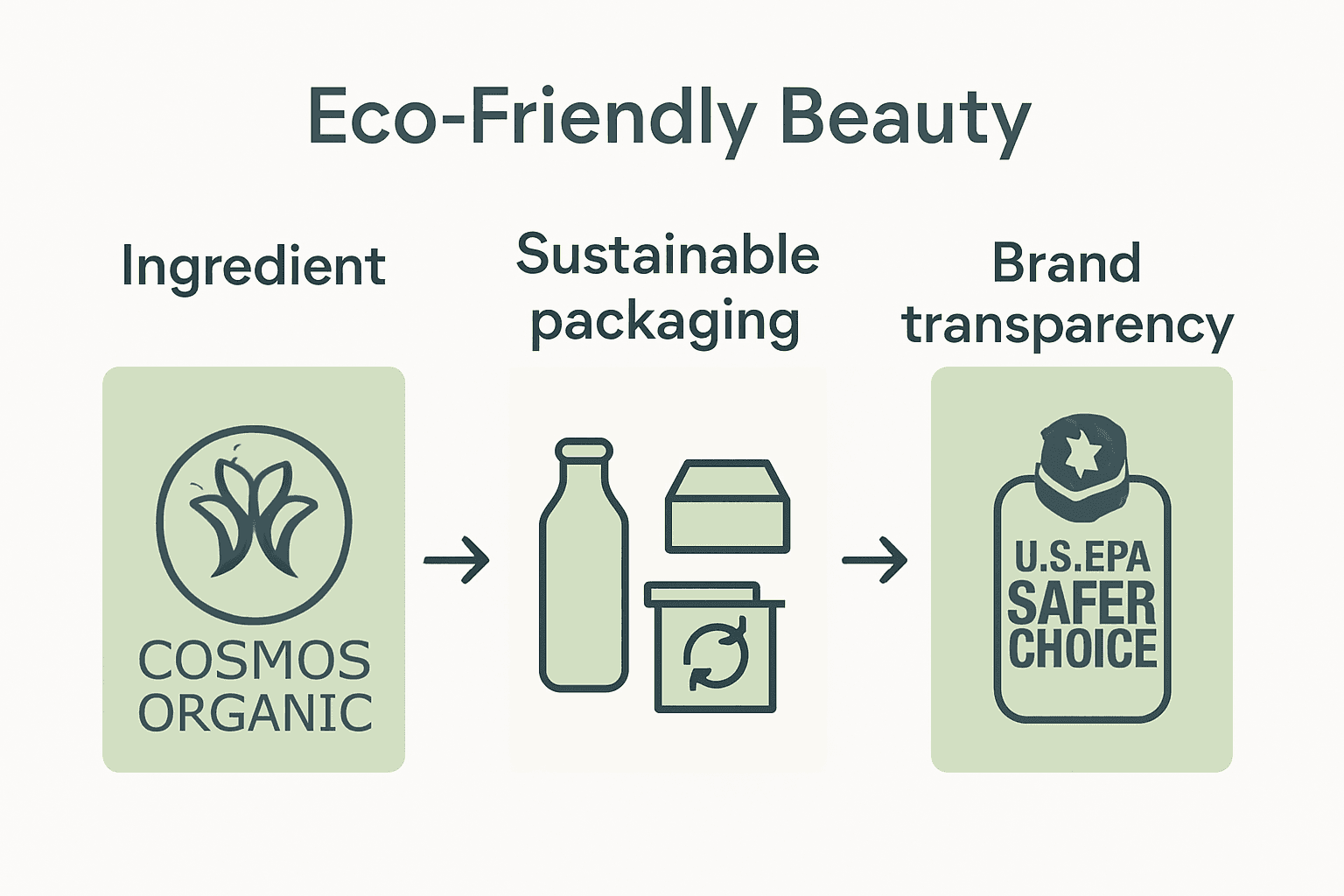
Pro Tip: Create a simple sustainability scorecard for yourself with categories like packaging recyclability, ingredient transparency, carbon footprint, and ethical manufacturing to help streamline your comparison process.
Step 4: Verify Brand Transparency and Ethical Standards
Unveiling the true ethical standards of beauty brands requires careful investigation and a commitment to understanding their core values. Ethical Beauty Brands: Impact on Consumer Choices provides valuable insights into how transparency shapes purchasing decisions.
The Union for Ethical BioTrade highlights the importance of ‘Sourcing with Respect’ as a critical benchmark for ethical beauty brands. Start by examining a brand’s supply chain transparency, looking for clear information about ingredient sourcing, fair labor practices, and environmental impact. Check for certifications that demonstrate commitment to ethical practices such as fair trade, cruelty-free labels, and sustainable sourcing programs. The Cosmetic Ingredient Review offers another layer of verification by providing independent safety assessments of cosmetic ingredients, which can help you understand a brand’s commitment to consumer safety and product integrity.
Dig deeper by exploring brands’ websites, annual sustainability reports, and third-party certifications. Look for detailed information about their manufacturing processes, environmental initiatives, and social responsibility programs. Pay attention to how brands address key ethical concerns such as worker welfare, carbon footprint, and community impact. Transparency means providing comprehensive information about their practices, not just marketing claims.
Pro Tip: Create a personal checklist of ethical standards that matter most to you, such as cruelty-free certification, sustainable sourcing, fair labor practices, and environmental commitments, to help you quickly assess a brand’s true ethical credentials.
Step 5: Test and Review Performance for Your Routine
Testing eco-friendly beauty products requires a strategic approach that goes beyond initial impressions and marketing claims. Morning Beauty Routine Checklist can help you establish a systematic evaluation process for new products.
Research from arxiv showcases an innovative AI-assisted skincare recommendation system that demonstrates the importance of personalized product testing. Begin by creating a comprehensive testing journal to track each product’s performance. Record key observations such as skin reaction, texture changes, hydration levels, and overall effectiveness. Aim to test each product for at least two to four weeks to understand its true impact on your skin. Pay special attention to how the product interacts with your unique skin type and existing skincare routine.
The arxiv research highlights the significance of ingredient-specific attributes in beauty product performance. Evaluate products not just on immediate results but on long-term skin health and compatibility. Look for subtle improvements in skin texture, tone, and resilience. Consider factors like ingredient interactions, potential sensitivities, and how the product addresses your specific skincare concerns. Document any changes in skin appearance, feel, and overall wellness.
Pro Tip: Take clear before and after photos under consistent lighting to objectively track your skin’s transformation, and consider using a rating system that scores hydration, texture, ingredient quality, and overall satisfaction.
Discover Eco-Friendly Beauty Made Simple With GNS Beauty
Selecting truly sustainable beauty products can feel overwhelming with so many ingredients, certifications, and packaging choices to consider. This article highlights the key challenges you face like understanding your unique skin needs, verifying brand transparency, and ensuring ethical sourcing. At GNS Beauty & Personal Care we understand your desire for high-quality, eco-conscious products that support your wellness and values.
Explore a curated selection of premium, eco-friendly skincare and personal care essentials designed to fit your personalized beauty routine. From plant-based ingredients to sustainable packaging, we make it easy to shop with confidence and promote natural beauty while protecting the environment.

Start your journey toward a cleaner, greener beauty routine today. Visit GNS Beauty to browse our thoughtfully chosen products that meet rigorous sustainability and ethical standards. Don’t wait to transform your self-care ritual with beauty solutions that truly align with your values and skin’s unique needs. Shop now to experience radiant skin and a healthier planet.
Frequently Asked Questions
How can I assess my skin type for eco-friendly beauty products?
To assess your skin type, wash your face with a gentle cleanser and wait an hour without applying any products. Observe how your skin feels—oily, dry, or balanced—to determine your skin type, which will guide you in selecting suitable eco-friendly products.
What are key eco-friendly certifications I should look for?
Look for certifications like the EPA Safer Choice and COSMOS, which indicate a product meets environmental and health standards. Check for these labels on packaging to ensure you’re choosing products that are genuinely eco-friendly.
How do I compare the sustainability practices of different beauty brands?
Compare brands by examining their packaging materials, recycling practices, and overall environmental initiatives. Create a simple sustainability scorecard to evaluate factors like ingredient transparency, carbon footprint, and ethical manufacturing to make informed choices.
What should I include in my checklist for evaluating ethical beauty brands?
Include criteria such as cruelty-free certification, fair labor practices, and sustainable sourcing in your checklist. This will help you quickly assess and ensure that the brands you consider align with your ethical values.
How long should I test eco-friendly beauty products before deciding if they work for me?
Aim to test each product for at least two to four weeks to assess its effectiveness on your skin. Document your observations regarding skin reactions and changes to gain a clearer understanding of how the product fits into your routine.
What ingredients should I prioritize for different skin types?
Prioritize ingredients that cater to your specific skin type: dry skin may benefit from hyaluronic acid, while oily skin may respond well to niacinamide. Research and choose natural, plant-based ingredients that align with your skin’s needs for optimal results.
Recommended
- Understanding What is Eco-Friendly Beauty and Its Impact
- Why Choose Eco-Friendly Beauty: Understanding the Benefits
- Sustainable Beauty: Ethical Choices for Quality Care
- Sustainable Personal Care Tools & Eco-Friendly Essentials
- Eco-Friendly Fragrance Dupes for Conscious Consumers
- 7 Nachhaltige Parfums Liste: Ecofreundliche Düfte Entdecken
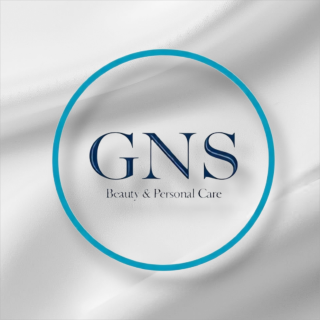
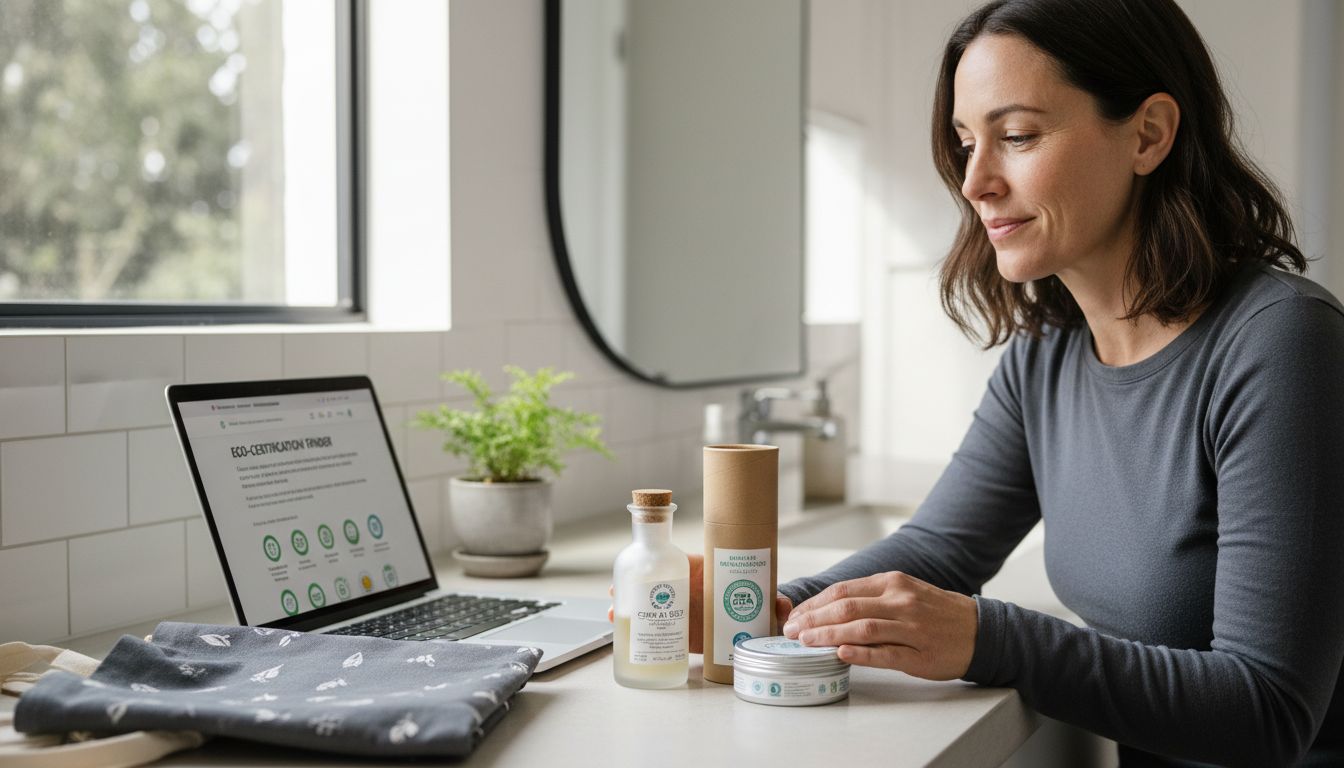
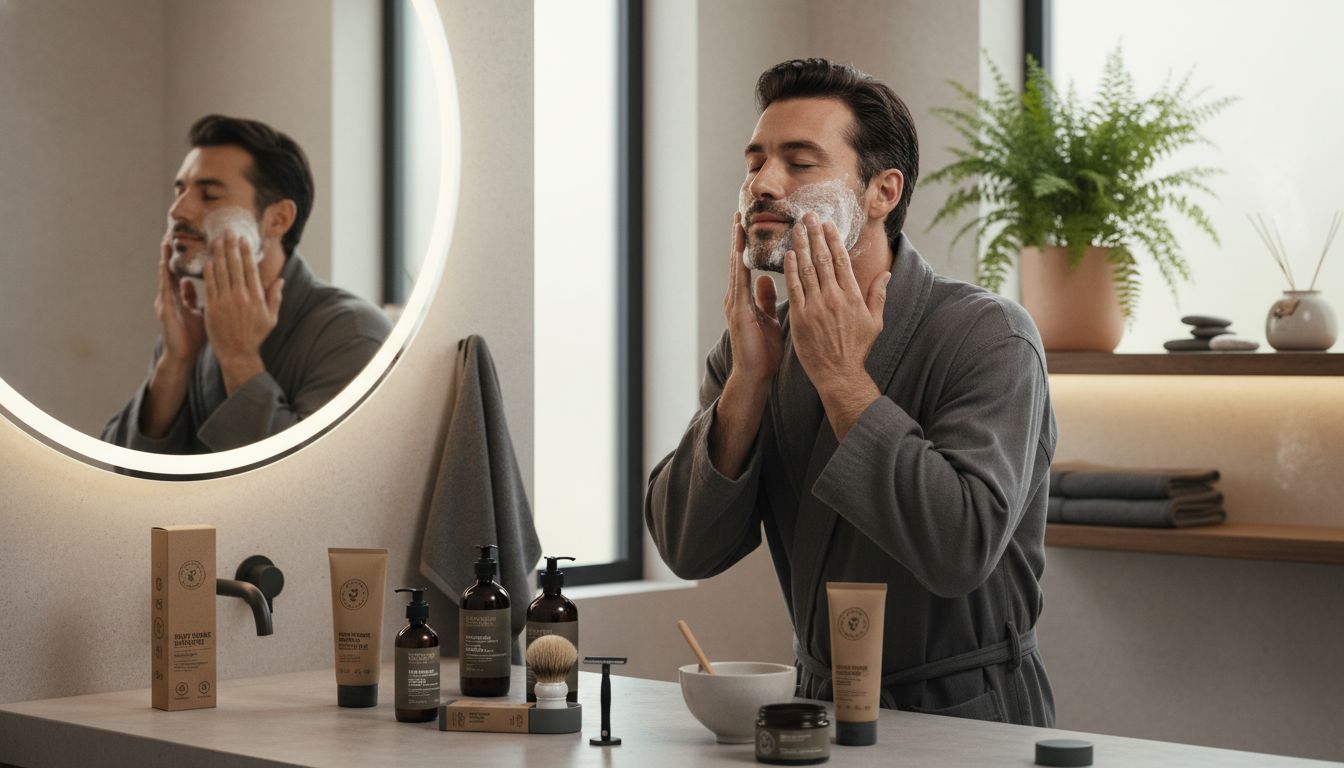





Hinterlasse einen Kommentar
Alle Kommentare werden vor der Veröffentlichung geprüft.
Diese Website ist durch hCaptcha geschützt und es gelten die allgemeinen Geschäftsbedingungen und Datenschutzbestimmungen von hCaptcha.